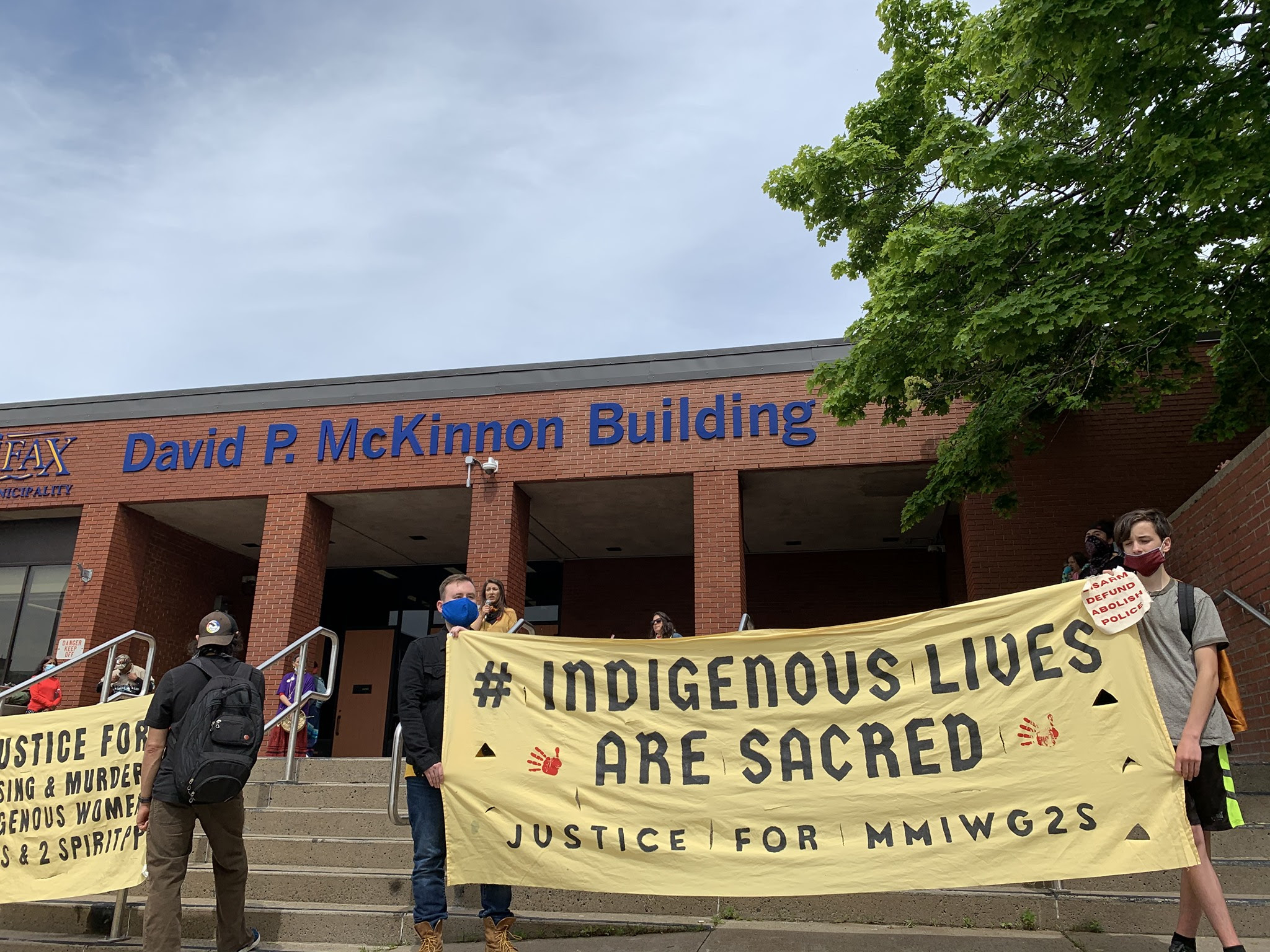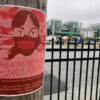
KJIPUKTUK (Halifax) – Two major Canadian police forces, the Peel Regional Police on the western fringe of Toronto and the RCMP, as well as the small Edmunston Police (in New Brunswick) are together responsible for five recent fatal shootings of unarmed citizens in their homes.
In two of these cases, someone had called for help because the victim was not acting ‘right’. The victim had been argumentative, or verbally unresponsive, or refused to take their medication. In a third case, the victim himself had called 911 for help because he was in a mental health crisis. The fourth case was a young mother – with no history of mental illness – who was confronted by a policeman in her apartment at 2.30 am. The fifth case was an Inuk man was killed by police who had entered his apartment because of a “disturbance.”
Last time I checked, none of those behaviours or situations warrant the death penalty.
But that is exactly what happened when police decided to conduct a “wellness check” on each of those persons, in their homes. As Hassan Choudhary noted about the shooting death of his uncle, Ejaz Choudry, “Our question is, ‘Why did you enter the residence of a man who was supposedly a threat to [only] himself, and you murder him?'”
When we look more deeply at the five victims of recent police shootings, similarities jump out. All five people were racialized. Choudry was South Asian; D’Andre Campbell was Black; Abraham Natanine was Inuk, Chantel Moore was Indigenous as was Rodney Levi.
Police shot each person within seconds of entering the homes. Each victim was less than 2 metres from the shooter.
Three out of five victims had mental health problems– but they had been living in their own homes and in their communities — despite their health vulnerabilities.
The five victims also share one more thing: the police shot each person many times. It wasn’t enough that the cops shot “to kill” each human being; one bullet would have likely accomplished that. But in the deaths of Choudry, Campbell and Levi —police first tasered, then used their gun “multiple times.” The single cop that was dispatched to Chantel Moore’s apartment, shot her five times.
Ejaz Choudry had schizophrenia and other health problems; he lived with his family in an apartment. The father of four children, his youngest son was only seven years old. On June 20, the police claim they were called to Choudry’s apartment to “check on the wellbeing of a man.” At the time, Choudry was alone. The cops climbed ladders to get to the balcony of the second floor apartment. A bystander’s video showed a group of armed police shouting orders and threats from the balcony at Choudry, who was steps away from them, in the living room. The cops then kicked down the patio door and within 20 seconds of arrival, they shot Choudry with stun guns. Then they fired plastic bullets at him, and ultimately they fired a gun “multiple times.” Said Ibrahim Hindy, an imam and friend of Choudry’s, “Mental health should not be a death sentence, what happened is unacceptable”.
D’Andre Campbell, who was 26 years old and Black, lived with schizophrenia. In early April, he called 911 for help—as he had done several times before. Officers from Peel Regional Police stormed into his home. Two cops first used their taser guns on Campbell, then one cop shot him with live ammunition “multiple times” in front of his mother, three sisters and his younger brother. His father, Claudius Campbell, explained, “[D’Andre] called Peel police for help, and they came here and crucified him… two minutes in the house and two gunshots to his chest.”
On May 5, two white RCMP officers went to the home of Abraham Natanine in Clyde River, Nunavut following a call about a “disturbance”. Natanine was the son of the town’s mayor Jerry Natanine. Police pumped three bullets into the younger Natanine, despite his wife’s pleading at the scene.
Chantel Moore, a 26 year old Indigenous woman, had just moved to Edmunston, NB from her home on the Tla-o-qui-aht First Nation in BC. She wanted to be closer to her six-year-old daughter who lived with Moore’s mother. Moore’s ex-boyfriend in Toronto had called Edmunston police to ask them to provide a “wellness check” on Moore, who he said had been getting “strange” messages on Facebook.
On June 4 at 2.30 a.m. a policeman entered Moore’s apartment. Nervous and apprehensive after being woken from sleep, Moore may have picked up a knife from the kitchen counter. Bear in mind the policeman who killed her was 6’3” tall and weighed 300 pounds. Chantel Moore was 5’4” tall and weighed 130 pounds. Again within seconds of arrival, the policeman fired five shots – bang, bang, bang, bang, bang – into Moore “at close range.” Asked how long it was between when the officer arrived and the shooting, Edmunston police inspector Steve Robinson admitted, “I don’t know, but it was really quick.”
Eight days after Moore’s murder, someone phoned in a complaint to police that a stranger was in a house near Miramichi, NB. Cops from the Sunny Corner RCMP detachment came to the house and – within seconds – shot Rodney Levi. Levi was a 48-year-old man with depression and mental health issues from the Metepenagiag Mi’kmaq First Nation. Within seconds of arriving at the house, the police used their tasers at least twice, then shot Levi “several times” with a gun. The police claimed Levi was hiding two knives in his sweater.
“He wasn’t in the right state of mind at that point of time,” said Metepenagiag Chief Bill Ward, who was also Levi’s friend. Ward had met and talked with Levi earlier that very day. “He wasn’t a violent person, so basically to me what it says is that if you’re mentally ill and you have a bad day, the cops can kill you for it.”
Quebec’s Bureau des Enquêtes Indépendantes (BEI) is investigating both murders in New Brunswick, because NB has no police watchdog agency. Since 2016 the BEI has investigated 55 cases in which civilians were seriously hurt by police, and 71 cases in which someone was killed by police. Out of the 126 incidents, not one police officer has been charged with a criminal offence. By comparison, in 2018-19 Ontario’s police watchdog the Special Investigations Unit (SIU) charged police officers in 3.6% of cases. In 2018-19, Nova Scotia’s watchdog, SIRT (Serious Incident Response Team), charged police officers in just over 9% of its investigations.
The Orwellian reality is that five people did not survive their “wellness check” carried out by police. There is no coincidence here: The police shot the five because of their race and because they could do so.
The RCMP has a long and brutal history of racism especially toward Indigenous people. In 2018, Brenda Lucki, newly appointed as RCMP Commissioner, promised that “no stone will be left unturned” in her mission to fix what was wrong with the RCMP. However, as recently as June 10, 2020, she denied systemic racism even existed in the force, “I’m struggling with it because I’ve heard about five or six definitions.”
In separate interviews the same day with other media she amplified her ignorance saying she was now struggling with 15 to 20 different definitions of systemic racism.
Lucki later added a more or less textbook definition of systemic discrimination: “It’s in the institutional structures that reflect the inequities that persist in our society. And it shows up in policies, processes or practices that may appear neutral on the surface, but disadvantage racialized people or groups.”
However, she said not one word about the systemic racism and violence which have been core to the RCMP’s values and culture since the force’s founding 100 plus years ago. No amount of diversity hiring, sensitivity training, or cultural training has changed a thing in the RCMP in terms of their attitude toward Indigenous Canadians. If the highest officer in the force trips up over the issue, then we must assume a failure in the entire organization.
Essentially, the RCMP and its defenders continue to blame the victims for having been shot. As Anne-Marie Livingstone, a Black researcher at the University of Toronto Munk School program in Ethnic, Immigration and Pluralism Studies notes, “If you consider racism just a feeling, then it is always the personal exception, never the systemic rule.”
Pam Palmater, a Mi’kmaw citizen, a lawyer and Chair of Indigenous governance at Ryerson University adds, “The problem is not Indigenous culture, it’s RCMP culture, which finds time and again that the racial profiling, harassment, brutality and the killing of Indigenous peoples is somehow justified. “
Only two of the five police murders can be laid at the feet of the RCMP, but consider this: the largest, the best trained, best educated and best equipped police force in this country is the RCMP. Peel and Edmundston police forces are many rungs below the RCMP in terms of quality of recruits and training. So if the RCMP shows its disgust and contempt for Indigenous people over a century, imagine the racism and bigotry of smaller police forces.
Judy Haiven is on the steering committee of Equity Watch, a Halifax-based organization which fights bullying, racism and discrimination in the workplace. You can reach her at equitywatchns@gmail.com
With a special thanks to our generous donors who make publication of the Nova Scotia Advocate possible.
Subscribe to the Nova Scotia Advocate weekly digest and never miss an article again. It’s free!



